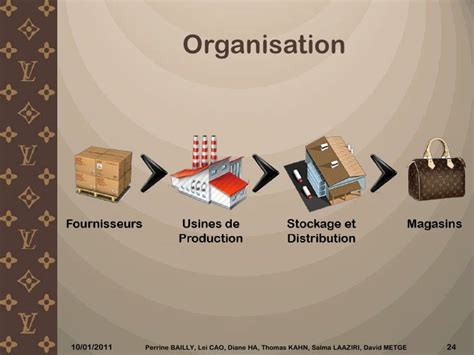does louis vuitton outsource | louis vuitton suppliers does louis vuitton outsource Louis Vuitton is reporting 78% of their raw material are responsibly sourced, which is against a 100% target by 2025, when they are also aiming to have eliminated the use of single use plastic. En 1942, la victoire change de camp. La chronologie de la Seconde Guerre mondiale permet de comprendre et de contextualiser l’enchaînement des événements politiques, civils et militaires qui ont lieu en France et dans le monde, à travers des actualités et faits majeurs. Soutenez Fortitude.
0 · louis vuitton supply chain
1 · louis vuitton suppliers
2 · louis vuitton supplier code
3 · louis vuitton responsible sourcing
4 · louis vuitton raw materials
5 · louis vuitton designer
6 · louis vuitton ddmrp
7 · louis vuitton case study
In the early 1950s, Rolex developed Professional watches that served as tools and whose functions went far beyond simply telling the time. These watches were intended for .
louis vuitton supply chain
Louis Vuitton is reporting 78% of their raw material are responsibly sourced, which is against a 100% target by 2025, when they are also aiming to have eliminated the use of single use plastic. Louis Vuitton, Gucci, Hermes, Chanel, Chloe, Loewe and Carolina Herrera are all reported to use the artisans here to make things such as handbags, wallets and belts.
Louis Vuitton is reporting 78% of their raw material are responsibly sourced, which is against a 100% target by 2025, when they are also aiming to have eliminated the use of single use plastic.
does chanel west cost have a brother
Louis Vuitton, Gucci, Hermes, Chanel, Chloe, Loewe and Carolina Herrera are all reported to use the artisans here to make things such as handbags, wallets and belts.In recent years, Louis Vuitton has used a new supply chain management system called DDMRP. DDMRP is a demand-driven, inventory-based system that helps to optimize inventory levels and ensure that products are always available to customers. Louis Vuitton also uses computer programs to help leather workers identify flaws in the skin they receive, reducing earlier the number of defects and the amount of faulty products returned. Similarly, robots are now smartly used to help workers focus on their core competencies: for example, in a shoe factory, robots are sparing workers walking . Today, the key ingredients of luxury – rarity, exclusivity, and cost — can also apply to virtual products, as companies like Balenciaga, Louis Vuitton, and Gucci have realized.
Although luxury brands owning the source of raw materials is not new, recent increases in the cost of those materials, especially in calf leather, fine sheep wool and exotic skins, has led to a renewed sense of urgency to secure supply. And since Louis Vuitton doesn't outsource any of its production and exclusively manufactures its handbags in Europe and the United States, the production costs are much higher. And, well, those costs get passed on to the consumer.
Unlike most companies who outsource their manufacturing, Louis Vuitton maintains its exclusivity by only utilizing in-house production in select countries; Italy, France, Spain, Switzerland, Germany, and the USA. Luxury conglomerates are only as strong as the megabrand at their core. Kering has Gucci, Richemont has Cartier. LVMH has Louis Vuitton, the king of the luxury jungle. Vuitton has top consumer appeal rankings across geographies.
Britain’s Burberry and France’s Louis Vuitton have both began to gain control over their production processes to offset the rebound in sales, according to Reuters. Earlier this month, Louis Vuitton expanded its e-commerce services to all major cities through China. Louis Vuitton is reporting 78% of their raw material are responsibly sourced, which is against a 100% target by 2025, when they are also aiming to have eliminated the use of single use plastic. Louis Vuitton, Gucci, Hermes, Chanel, Chloe, Loewe and Carolina Herrera are all reported to use the artisans here to make things such as handbags, wallets and belts.In recent years, Louis Vuitton has used a new supply chain management system called DDMRP. DDMRP is a demand-driven, inventory-based system that helps to optimize inventory levels and ensure that products are always available to customers.
Louis Vuitton also uses computer programs to help leather workers identify flaws in the skin they receive, reducing earlier the number of defects and the amount of faulty products returned. Similarly, robots are now smartly used to help workers focus on their core competencies: for example, in a shoe factory, robots are sparing workers walking . Today, the key ingredients of luxury – rarity, exclusivity, and cost — can also apply to virtual products, as companies like Balenciaga, Louis Vuitton, and Gucci have realized.
Although luxury brands owning the source of raw materials is not new, recent increases in the cost of those materials, especially in calf leather, fine sheep wool and exotic skins, has led to a renewed sense of urgency to secure supply.
And since Louis Vuitton doesn't outsource any of its production and exclusively manufactures its handbags in Europe and the United States, the production costs are much higher. And, well, those costs get passed on to the consumer.
Unlike most companies who outsource their manufacturing, Louis Vuitton maintains its exclusivity by only utilizing in-house production in select countries; Italy, France, Spain, Switzerland, Germany, and the USA. Luxury conglomerates are only as strong as the megabrand at their core. Kering has Gucci, Richemont has Cartier. LVMH has Louis Vuitton, the king of the luxury jungle. Vuitton has top consumer appeal rankings across geographies.


chanel 22 b
Historical events in November 1917. Learn about 26 famous, scandalous and .
does louis vuitton outsource|louis vuitton suppliers

























